Self-loading pistol Charter Arms Explorer II (USA)
History The Charter Arms Explorer II pistol dates back to the early 1950s, when the American arms company ArmaLite received an order to develop a new survival rifle, designed for US air force pilots. Soon the AR-5 rifle was created, which was later put into service under the name MA-1 Survival Rifle. For certain reasons, the army took the rifle, but did not order its mass production. After several years of waiting, it became clear that the MA-1 product would never go into service.
Not wanting to lose successful groundwork, ArmaLite reworked the existing project, and in 1958, the AR-7 Explorer self-loading rifle was launched to the market. This product retained the layout and basic performance of the previous AR-5 / MA-1 rifle, but was distinguished by the presence of simple automation and used the more popular ammunition. AR-7 interested potential buyers and went into a large series.
ArmaLite continued to produce AR-7 rifles until 1973, after which it decided to focus on other samples. However, the production of such weapons has not ceased. The AR-7 project documentation was sold to Charter Arms, which wished to establish its own production. In the same year, the first production articles of the Charter Arms AR-7 Explorer rolled off the assembly line. The new manufacturer collected these weapons until the early nineties.
Charter Arms produced AR-7 rifles without significant design changes. The original project was finalized only from a technological point of view. However, the desire to increase sales and expand its presence in the market soon led to the emergence of a new weapon based on the existing sample. By the early eighties on the basis of a self-loading rifle Explorer decided to develop a small-caliber pistol.
The specific characteristics of the rifle, associated with the use of a low-power cartridge, made it easy to convert it into a short-barreled sample of another class. In this case, however, the designers of the Charter Arms had to take into account the requirements of the American weapons legislation. Despite the maximum unification of the rifle and pistol, it was necessary to exclude the interchangeability of some parts. So, at the construction level, it was necessary to prevent the installation of a short pistol barrel on the rifle, and also to deprive the pistol of the possibility of mounting the butt. All these tasks were solved in the most simple way.
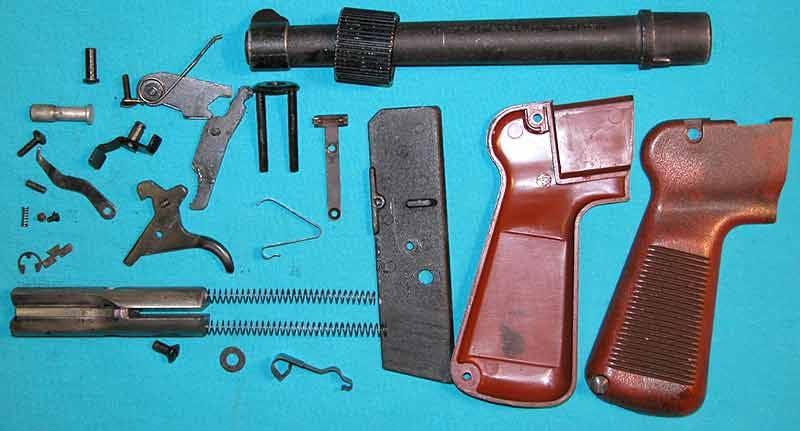
Complete disassembly. Photo Gunauction.com
The project of a perspective pistol was a further development of the existing rifle, which was reflected in its name. The new weapon was called Explorer II ("Explorer-2"). The alphanumeric designation in the new project was abandoned.
The base rifle consisted of three main components: the barrel, receiver and stock. The latter was also a cover for other devices. When developing a pistol, the butt was abandoned, using other fittings. The complex in the form of a receiver with the necessary details and a removable barrel, in general, remained without major changes. Automation, trigger mechanism and means of ammunition also did not change. The already used approach to the selection of materials was used. Most of the parts could be made of aluminum and plastic, differing in light weight with sufficient strength.
From the basic project to the new passed the design of the receiver, which served as the frame and casing of the shutter. This unit retained the overall layout and other aspects of the design, but was refined. The box consisted of two main parts. The upper cylindrical had to accommodate the bolt and return springs. On its right side there was a large window for ejection of cartridges and a longitudinal groove for the reloading handle.
Under the cylinder was a rectangular casing. Its front end acted as the receiving shaft of the store, and in the back it placed the details of the firing mechanism. In the basic design of the AR-7, the lower element of the receiver had a reduced rear part that was included in the stock slot. Pistol frame on the basis of this box received a handle. The frame included its metal base of the desired shape. The back surface of the handle rose significantly upwards, forming a ridge supporting the rear wall of the cylindrical unit.
The Charter Arms Explorer II pistol was equipped with a rifled barrel with a length of 8 inches (203 mm). The barrel chamber was designed for ring ignition ammunition .22 Long Rifle (5,6x15 mm R). The outer diameter of the barrel decreased towards the barrel. In the breech provided for the installation of a large nut, in the muzzle - the fly. Removable barrels for a rifle and a pistol differed in the form of a breech, and therefore were not interchangeable.
As weapons were mass-produced, the developer company proposed new modifications with other barrels. The buyer could choose a gun with a barrel length of 6 or 10 inches - 152 and 254 mm, respectively.
A pistol, like a rifle, received an automatic based on a free shutter. Inside the receiver was placed a movable cylindrical gate, interacting with a pair of return springs. A moving drummer was placed in the cavity of the bolt. The shutter was controlled by the handle, which was pulled out through the right groove of the casing. For greater ease of operation, the handle could be sunk into the interior of the bolt, after which only its cap went outside the bounds of the receiver.
The product Explorer II has retained the existing trigger type trigger mechanism. Inside the box-frame there was a T-shaped trigger and a trigger with a combat spring, which interacted with each other without any additional details. Right in the back of the weapon was a swinging fuse box. When it was moved back, the inner lever lever blocked the movement of the trigger. Access to the details of the trigger was provided by the removable left wall of the frame.
The design of ammunition was not recycled. The .22 LR cartridges should have been fed from a detachable box magazine placed in the receiving shaft. In its place, the store was secured with a latch. The control key of the latter was inside the trigger guard. Initially, Charter Arms Explorer II pistols were supplied with 8 ammo magazines. Subsequently, enlarged stores were created on 16, 20 and 25 cartridges. The latter was distinguished by its long length and curved shape, which gave the pistol a specific appearance.
Gun sights were different from the corresponding basic rifle devices. Now used unregulated front sight mounted on the muzzle thickening of the trunk. The movable rear sight was located on a bracket fixed on the receiver and on the back ridge. All this allowed us to obtain the maximum possible length of the sighting line.
From a certain time, the serial pistols were supplemented with an installation bar for additional sighting devices. On the left wall of the receiver was placed a special profile bar, on which it was possible to mount an L-shaped bracket with an optical or other sight. The type of the last shooter could choose on their own, in accordance with their needs and desires.
To comply with the legislation, the Explorer II pistol should not have been fitted with a stock fit tool. This task was solved in the most simple way. In the back of the receiver-frame set fixed pistol grip. Its basis was a metal part of the required profile, on which plastic lining with a notch was fixed. The handle had a large cavity, which was proposed to be used to carry a spare magazine on 8 cartridges. The presence of a large base of the handle did not allow to connect the receiver of a pistol with a rifle butt.
By its principles of operation, the new pistol did not differ from the basic AR-7 rifle. Before shooting, it was necessary to install a magazine, take the bolt back and return it to its original position. Turning the fuse box, you could shoot. Despite the low power of the cartridge, there was enough recoil to roll back the shutter and perform the entire recharge cycle. After emptying the store shutter went ahead. The slide delay was not used, and therefore for the next shot it was necessary to manually perform all reloading operations.
The gun with the original eight-inch barrel had a total length of 394 mm. When using a shorter 6-inch barrel, the weapon length was reduced to 343 mm. The gun with the largest barrel differed in length 445 mm. In all cases, the height of the weapon (excluding the large protruding magazine) did not exceed 165-170 mm. Weapons with two full-time stores (one in the mine, the second in the handle) weighed less than 1 kg.
The Charter Arms Explorer II pistol was launched in the United States in 1980. Fans of small arms quickly appreciated this sample, and the company-developer had the opportunity to expand its presence in the market, as well as make money on the simple development of the finished project. However, as far as we know, the Explorer II gun did not succeed in replicating the commercial success of the ArmaLite / Charter Arms AR-7 basic rifle.
The AR-7 small-bore rifle, which had not the highest fire characteristics, was positioned as a weapon for training, entertaining shooting and hunting for small game. The Explorer II pistol retained some of these capabilities, but a shorter barrel significantly reduced the effective range of fire and thereby influenced the use of the weapon. Also, a specific feature of the weapon, which affected its operation, was a large length regardless of the barrel used.
Due to insufficient fire performance, the Charter Arms Explorer II small-caliber pistol could not be used as a convenient and effective hunting weapon. At the same time, he was a good model for entertaining shooting or initial training.
The Explorer II pistol had a number of positive features, some of which were "inherited" from the base rifle. He was quite cheap and easy to handle. The small mass of the weapon and weak return of the low-power cartridge facilitated firing. Despite the relatively long length in the combat position, the pistol could be stored with the barrel removed, which reduced the required volumes. The .22 Long Rifle cartridge was very popular, and this also simplified the use of the pistol to a certain extent.
However, there were drawbacks, some of which were also characteristic of the AR-7 rifle. Cases of early stores did not differ in high rigidity, which could lead to the deformation of its feeding devices. The results of such damage were incorrect feeding of cartridges and delays in shooting. The removable barrel, under certain circumstances, did not contribute to the high accuracy of the fire.
Charter Arms continued mass production of Explorer II pistols until 1986. Within a few years, a large number of such products were shipped to customers, and all of them were eventually sold out, adding to the arsenals and collections of weapons lovers. As you can see, a significant part of these pistols still remains in operation. Explorer II used pistols often appear on various marketplaces and are sold at an affordable price.
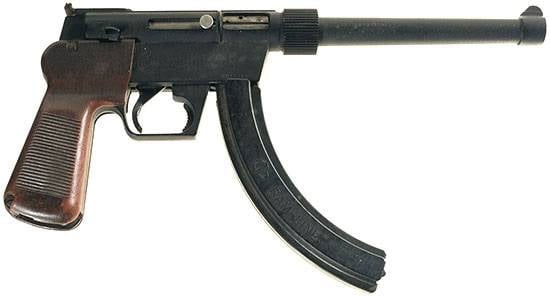
Explorer II with a magazine for 25 ammo. Photo Weaponland.ru
The production of AR-7 Explorer rifles at the Charter Arms plant continued until the 1990 year. Then this weapon again changed its owner, and soon new serial rifles appeared on the market, distinguished by a different brand of the manufacturer. Since then, the license to manufacture such weapons has been transferred several times to new weapons companies, until it was transferred to Henry Repeating Company. It is she who is now engaged in the further development of the original design and produces various modifications of it.
The AR-7 rifles remain in the series for almost 60 years. The release of Explorer II pistols ended just six years after launch. The last batch of these weapons was handed over to the customer more than three decades ago, and new samples no longer appeared. Several new owners of rights to the Explorer rifle continued the development of the basic project, but were not interested in the subject of pistols. As a result, a new version of the product Explorer II or another similar weapon has not yet appeared. Moreover, there is every reason to believe that a new weapon of this kind will never be created.
In the late fifties, the company ArmaLite used the existing experience on the existing survival rifle for the US Air Force and created on their basis of civilian self-loading weapons. Later, after selling the rights to this rifle to another company, a project of deep modernization was proposed, which included the manufacture of a pistol. The product Explorer II, which was a slightly reworked AR-7 rifle, entered the market and sold well, but still could not repeat the success of its predecessor. In the mid-eighties, he was removed from production, and new guns based on the AR-7 were no longer created.
On the materials of the sites:
http://weaponland.ru/
http://modernfirearms.net/
http://casualshooter.blogspot.fr/
http://gunhub.com/
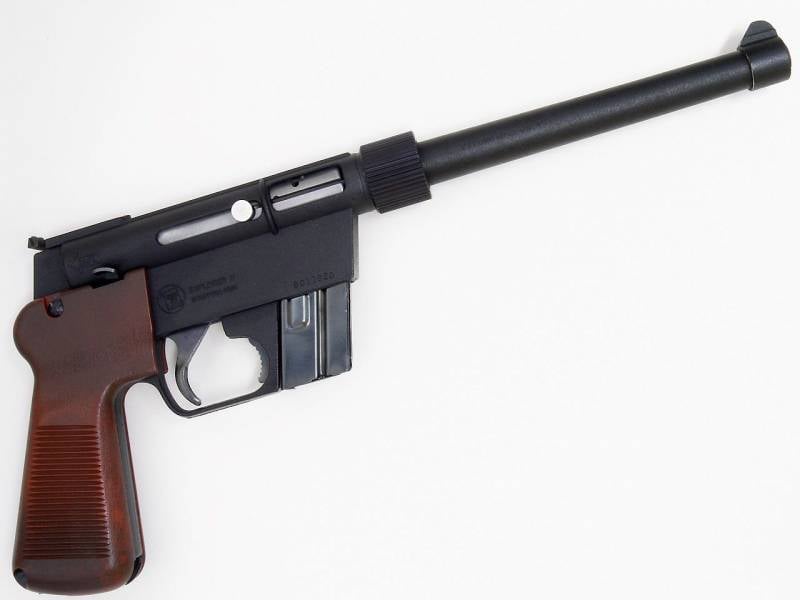
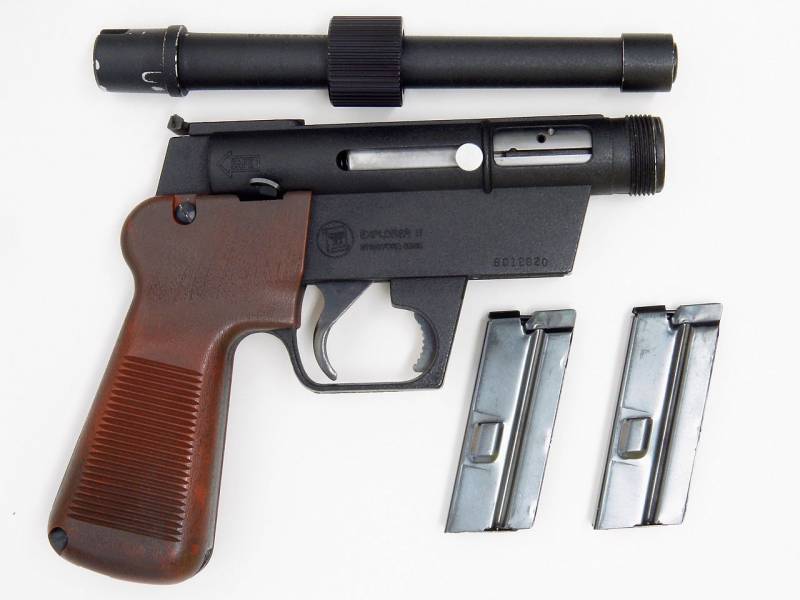
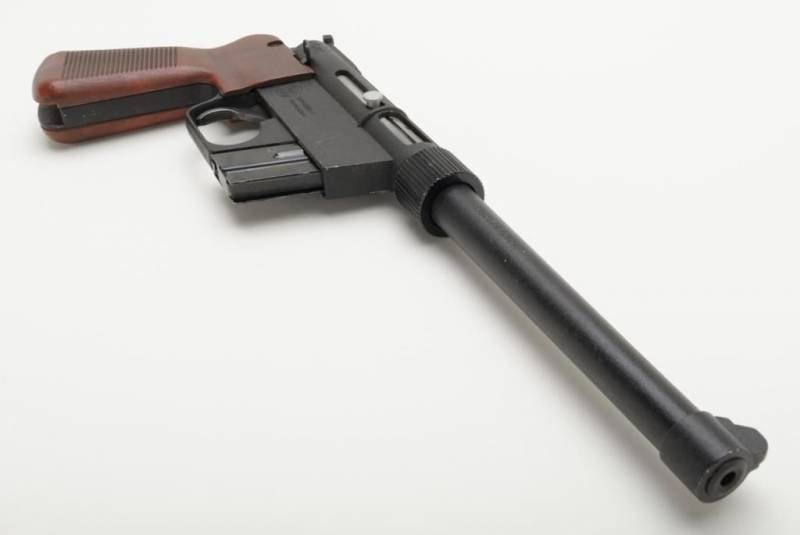
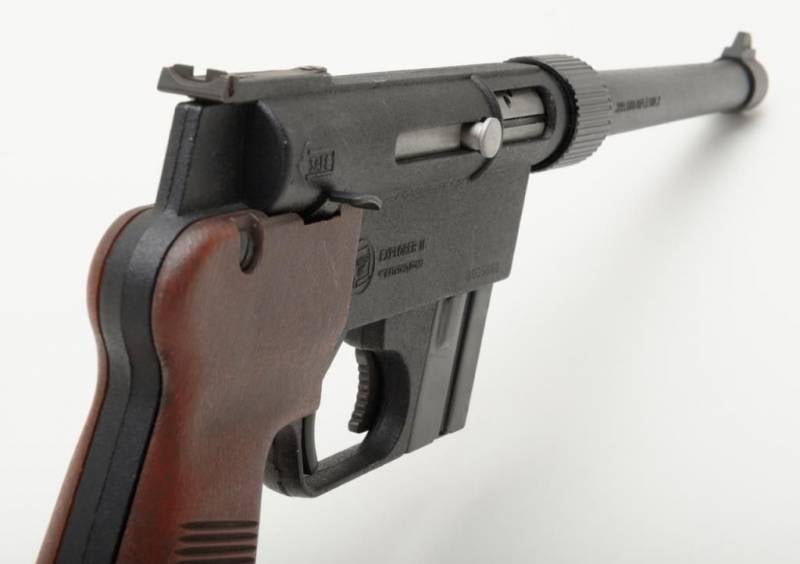
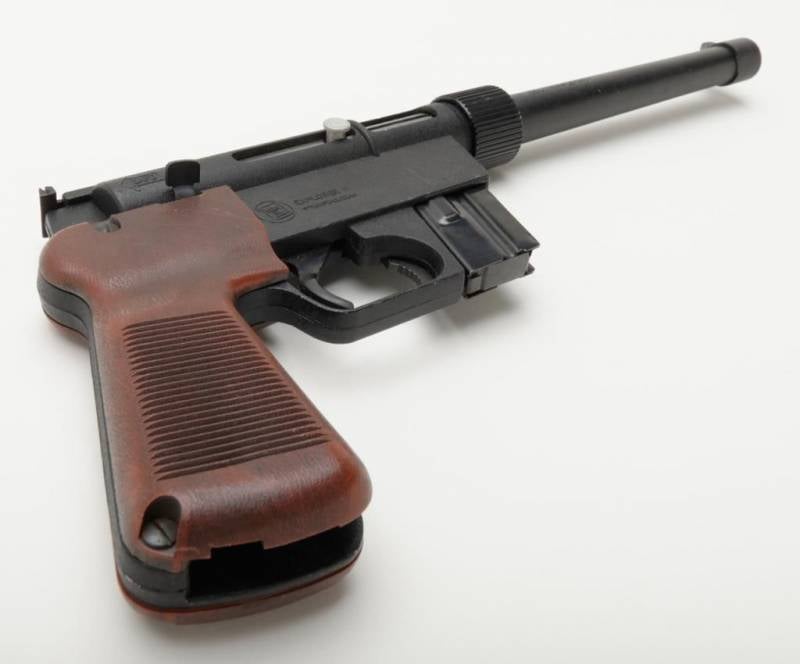
Information